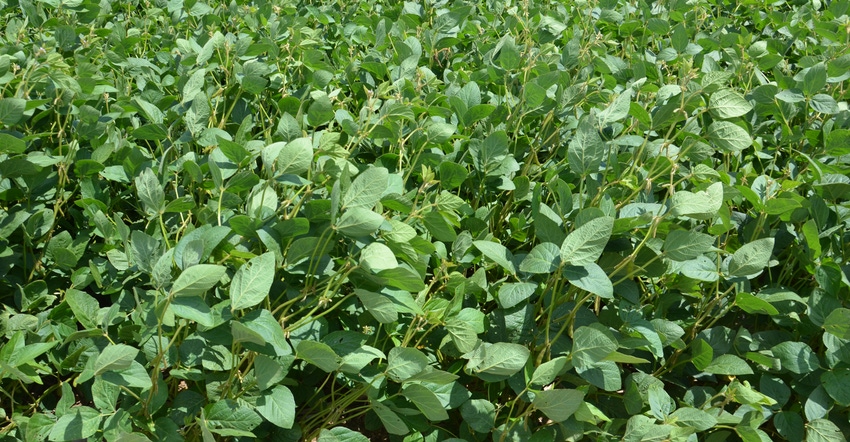May 27, 2021

There are three soybean stage timings for fungicide applications that a lot of people discuss: R2, R3 and R4. Each timing has its advantages and disadvantages. Let’s take a closer look at each one:
R3 stage. Soybeans reach this reproductive stage when you can find 3/16-inch soybeans at any of the four uppermost nodes. If I were new to using a soybean fungicide, this is the stage I would target. This application usually will take place sometime in mid- to end of July, depending on soybean maturity and planting date.
Soybeans are at a stage to get good coverage on most leaves in the canopy. All fungicides have an expected length of control, so you start that clock well into reproduction and should have good control of diseases through R4 and perhaps into R5, depending on the fungicide.
If you add an insecticide, you will control the insects that are currently there, but you may not have enough time to control stinkbug.
Related: Soybean fungicides: What you should know
R4 stage. You can identify this reproductive stage when you find ¾-inch pods at any of the four uppermost nodes. This fungicide application is pretty late in the game but can be very effective if we’re having a low disease year.
The advantage of this timing is it is pretty late into reproduction, so the time clock regarding control can take you farther into grain fill than applications made at R3 and R2. If you are adding an insecticide, you may control a current stinkbug population to get you through most of grain fill.
The biggest disadvantage is that due to the size of the soybean plant and number of leaves, you may not get good coverage of the lower trifoliates that support the lower pods of the plant. And there may be a disease already started at the bottom of the plant that could be affecting soybean pod fill in the lower nodes.
R2 stage. Soybeans are in full flower. For a first-time fungicide user, I think this is too early to apply a fungicide. There are growers who apply regularly at R2, but they often follow with another application at R4 as well, knowing that the R2 application will not be long enough regarding activity to control diseases for the rest of the year. If soybeans were planted early, R2 could occur right after the summer solstice since R1, or first flower, likely occurred before the summer solstice.
The biggest advantage of the R2 application is coverage. Because soybeans at this application timing are relatively small compared to R3 and R4 stages, you should get great overall plant coverage, including the lower leaves that are supporting the lower pods.
Be sure to scout for insects, but we typically do not find as many at R2 as we do at late R3 and R4. If this timing is used, you would need to monitor soybeans late into grain fill and apply an insecticide if needed.
Bower is an agronomist with Ceres Solutions. She is based in west-central Indiana. Bower is also an Indiana certified crop adviser and coordinates the corn and soybean CCA columns that appear in Indiana Prairie Farmer.
You May Also Like




